Painting Demonstration 1
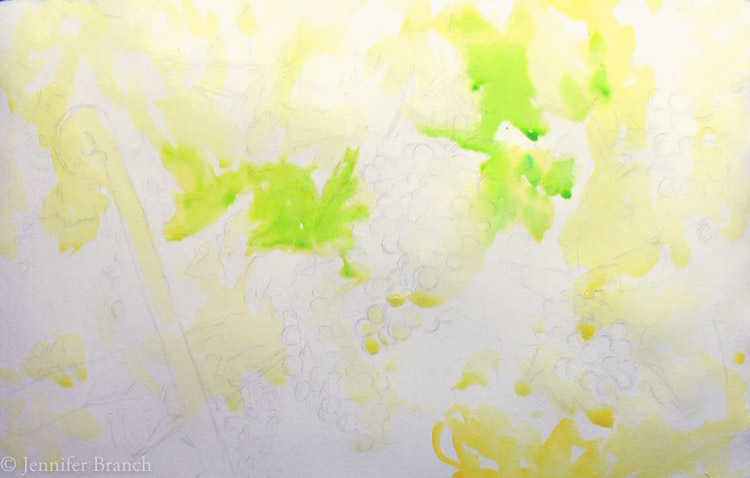
I start with a wash of cadmium yellow in all my shadowed areas. Then I drop in some pthalocyanine green tempered with azo yellow. This gives me a lovely golden glow in my background. I'm going layer green grape leaves all over the background. The yellow glow gives me a backlit effect.

Remember not to paint in your highlights! You want to leave them white paper as much as possible.
Painting Demonstration 2
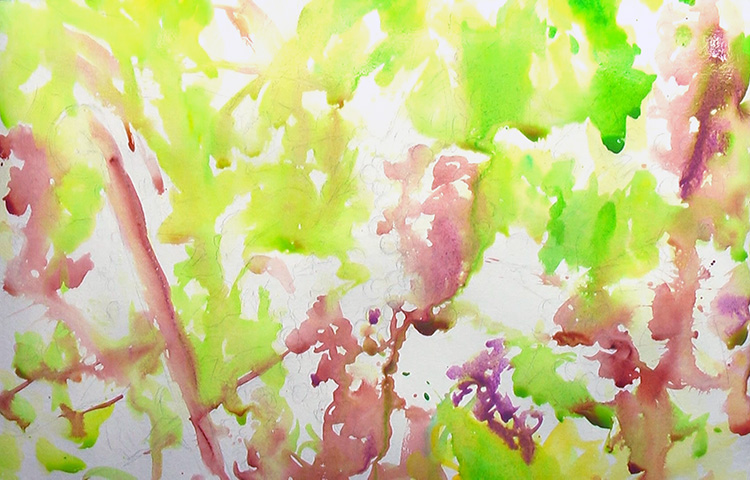
While the background is still very wet, I start dropping in brown-red maroon perylene. This is a perfect burgundy grape color! I want the colors to be slightly muted and warm as compared to the reference photo. I want a bit more of a golden glow highlighting the grapes. Less blues from the stone wall and shadows and more rich burgundies. Just fits with my memories of afternoon light in Italy! A hazy gold highlighting everything!
I have some fun splattering some clean water and paint around. I want this painting to be very loose!
Painting Demonstration 3

Quinacridone red makes the center grapes glow. Quin red is just a bit more transparent and warmer than maroon perylene so it makes the center grapes really glow! Of course, move the pigment around the painting a bit since you don't want a color in just one place.
Continue splattering a bit and letting the colors flow together. Think of the grapevines as a living floral arrangement.
Let this layer dry!
Artist Tips
To loosen the painting up, splatter it a few times with clean water!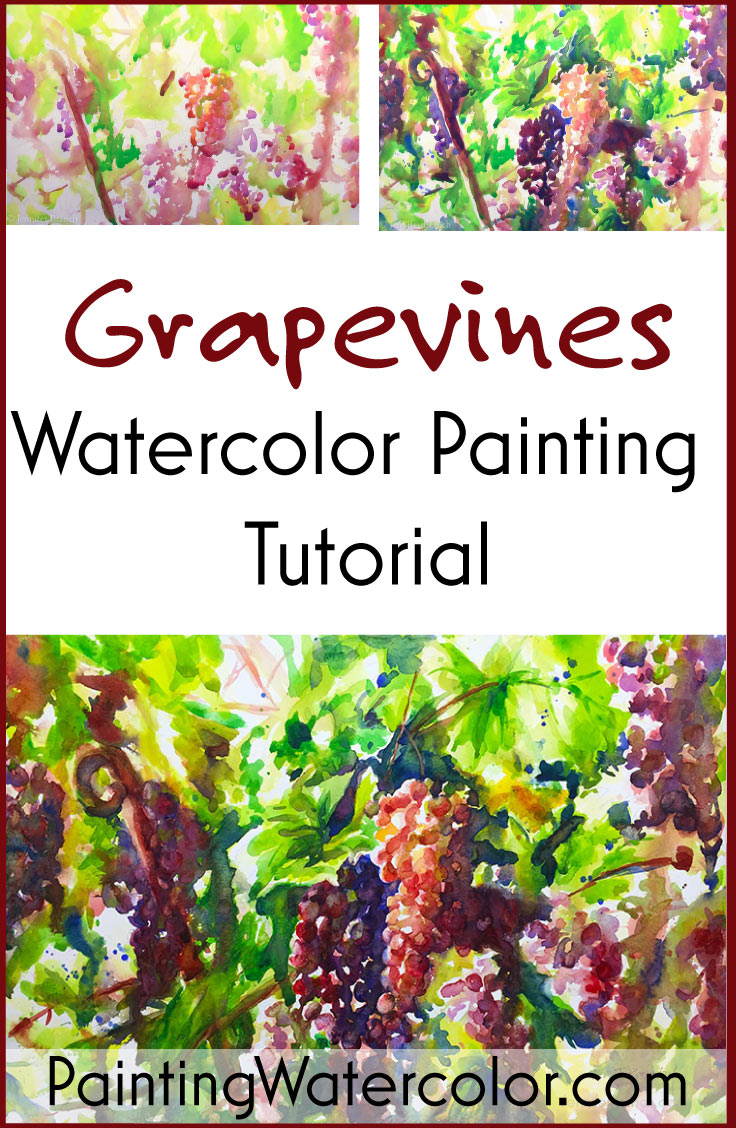
Painting Demonstration 4
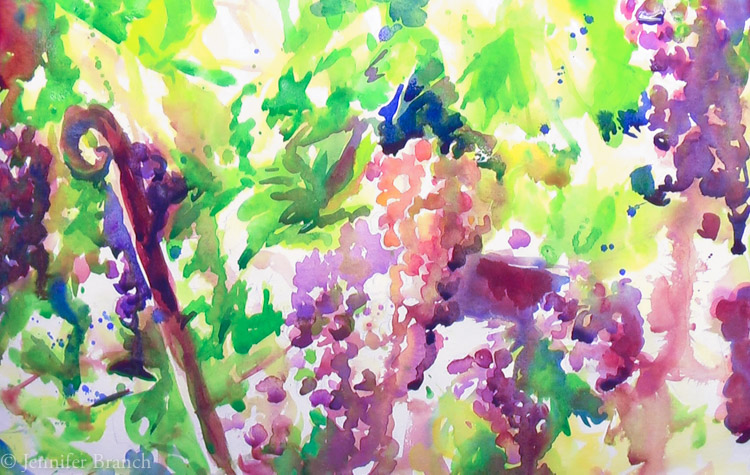
Now I'm adding some contrast to the painting! Rich cool ultramarine blue ribbons through the painting, adding bits of contrast and almost connecting. I use the pink purple of ultramarine pink as a brighter contrast to the maroon perylene background.
I keep splattering with paint and clean water to loosen the painting. Remember there is a fine line between the right amount of a painting technique and gimmicky!
Painting Demonstration 5

Notice how much paler the ultramarine blue in the center of interest dried. Paint color changes dramatically when it dries - it's up to the artist to know what it will end up as, not what it looks like as it's painted.
I think the worst time I've ever had with paint color changing is china paint. When I started out painting I did a lot of work for interior designers and tile backsplashes were one of my specialities. I used china paint since it is luminous (why yes, kindof like watercolor) after about twenty firings. Ceramic paint is much easier, since 1 or 2 firings will finish the project, but wow, china paint is just gorgeous when you're done!
But china paints change color dramatically when you paint them. Reds turn brown, and a true finished painting bright red is very tricky to get. If any one layer is too heavy, it just doesn't work. (And yes, I may have painted grapevines a few times in china paint!)
So I made myself color charts, carefully labeled with pigment names, until getting the correct color was second nature to me.
If you're having trouble laying colors you should try doing the same thing with watercolor paints. Practice again and again until you absolutely know what color 3 layers of different pigments will be.
Painting Demonstration 6
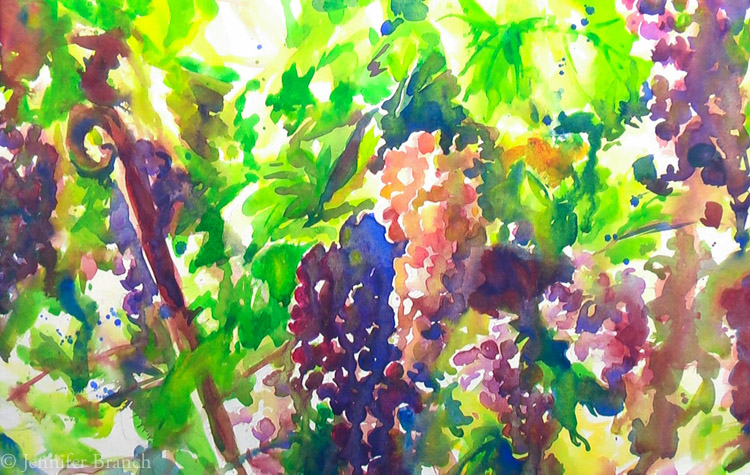
I've decided the harsh line of the iron arbor support is pulling the viewer's eye out of the painting. I need to break it up a bit. I start by pulling a grape leaf over the iron bar.
I want some more darks around the central grapes. I add some ultramarine blue with dashes of red and bare touches of green.
Painting Demonstration 7

A few details dashed in here connects the painting together. Not too much detail or it will distract from the feel of the painting.
I continue breaking up the line of the ironwork with grapes and leaves. I don't mind hints of the iron showing through, after all, leaves are translucent.
I don't want this painting dark, but sunlit so too many strong darks would dull the effect. However, without the darks the light doesn't show up!
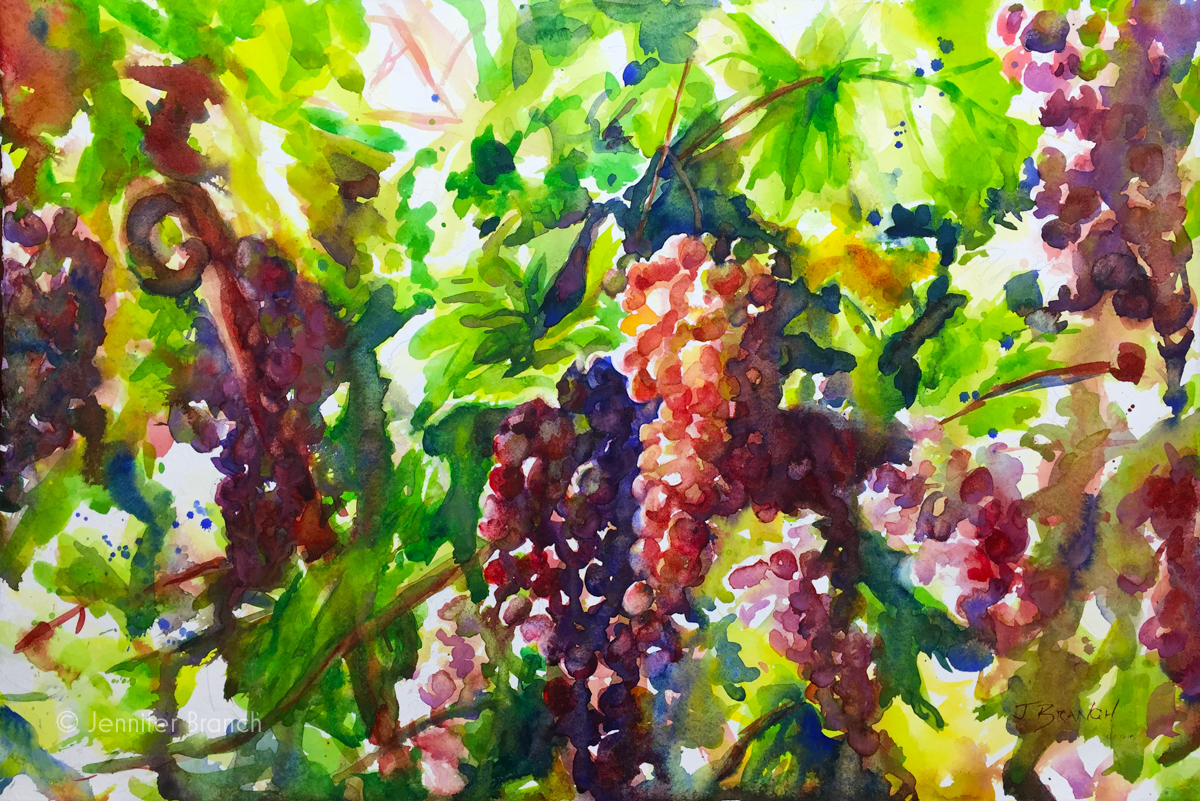
To purchase Painting Grape Vines in Watercolor original watercolor painting, please click!
Painting Grape Vines in Watercolor Final Watercolor Painting!
I didn't add much more detail at the end, just a few touches. A little rounding of some grapes, pulling out a few areas, adding a tinge of quinacridone red to highlight the bases of the grapes. It doesn't take much to overwork a loose and lively painting, so I keep it simple.
This watercolor painting of grape vines was a lot of fun! The slight golden haze of just before dinner is a lovely thought of Italy. Think of walking among grapes, sketching a little, planning on a wonderful Italian dinner with a glass of wine from these vines last year. La dolce vita!






